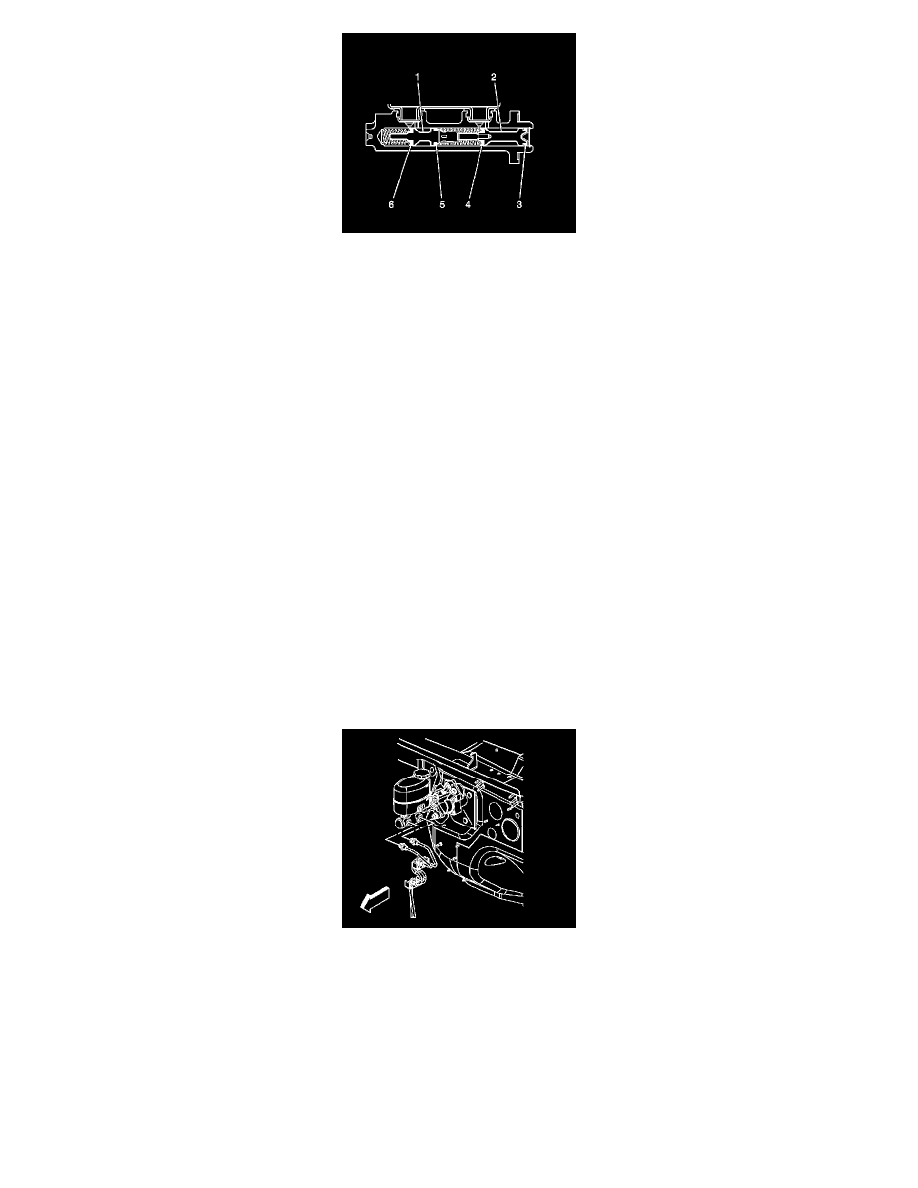Express 1500 RWD V6-4.3L VIN X (2005)

1. Important:
Do not use abrasives to clean the brake master cylinder bore.
Clean the interior and exterior of the master cylinder, the secondary piston (1), and the return spring in denatured alcohol, or equivalent.
2. Inspect the master cylinder bore, inlet and outlet ports, the secondary piston (1), and the return spring for cracks, scoring, pitting, and/or corrosion.
Replace the master cylinder if any of these conditions exist.
3. Dry the master cylinder and the individual components with non-lubricated, filtered air.
4. Lubricate the master cylinder bore, the secondary piston (1), the return spring, and all of the individual overhaul components with Delco Supreme
11®, GM P/N 12377967 (Canadian P/N 992667) or equivalent DOT-3 brake fluid from a clean, sealed brake fluid container.
5. Assemble the lubricated, new primary seal (6) and retainer, and new secondary seal (5) onto the secondary piston.
6. Install the lubricated return spring and secondary piston assembly (1) into the cylinder bore.
7. Install the lubricated, new primary piston assembly (2) into the cylinder bore.
8. Using a smooth, round-ended tool, depress the primary piston (2) and install the new piston retainer.
9. Install the master cylinder reservoir to the master cylinder.
10. Install the reservoir cap and diaphragm to the reservoir.
11. Install the master cylinder to the vehicle.
Master Cylinder Replacement
Master Cylinder Replacement
Caution: Refer to Brake Fluid Irritant Caution in Service Precautions.
Notice: Refer to Brake Fluid Effects on Paint and Electrical Components Notice in Service Precautions.
Removal Procedure
1. Apply the park brake and block the wheels.
2. Disconnect the electrical connector from the brake fluid level sensor, if applicable.
3. Remove the driver side upper fender support.
4. Important:
Install a rubber cap or plug to the exposed brake pipe fitting ends in order to prevent brake fluid loss and contamination.
Disconnect the brake pipes from the master cylinder.
5. Plug the open brake pipe ends.
